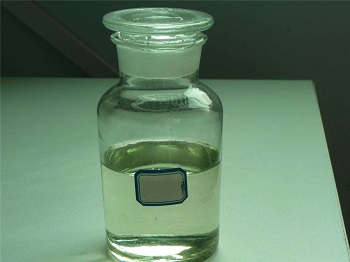| Description | 2-methylfuran is a flammable, water soluble liquid with the potential to be used as an alternative biofuel. It has become very attractive and promising due to the recent breakthrough in its production method through dehydration and hydrogenolysis of fructose or cellulose. This indicates the prospect of industrial mass production of 2-methylfuran and its derivative 2, 5-dimethylfuran. The 2-methylfuran and 2, 5-dimethylfuran have now been considered as a potential choice of alternative fuel pathway for spark ignition (SI) engines because of their similarities to gasoline. Therefore, as an alternative bio-fuels, it presents a potential way to provide sustainable-renewable sources and tackle the severe issue of fossil fuel depletion and global warming.
 |
| Chemical Properties | 2-Methylfuran is a flammable, water-soluble liquid with a chocolate odor, found naturally in Myrtle and Dutch Lavender used as a FEMA GRAS (Generally Recognized As Safe) flavoring substance, with the potential for use in alternative fuels.
2-Methylfuran is expected to gain traction in the near future as it is primarily used in pharmaceuticals industry. It is a light yellowish green volatile organic compound with an ethereal odor and is also known as sylvan. 2-Methylfuran changes its shading to black or yellow when exposed to sunlight. It is highly flammable and hence is stored in a ventilated, cool dry place far from heat & fire.
|
| Uses | 2-Methylfuran is widely used in manufacturing of drugs like atropine, sodium acetate, furadantine, anisodamine and thiamine furan. In pharmaceuticals industry, synthesis of vitamin B1 is done using 2-Methylfuran. It is less dense than water but its vapors are heavier when contrastedwith air. 2-Methylfuran also finds application as a tool for screening of lung cancer and production of anti-malarial drug like chloroquine. It is also used to produce methyl furfural, aliphatic compounds and sulfur and nitrogen heterocycles. Moreover, 2-Methylfuran is also used for making pesticides, flavors or fragrances and has narcotic effect. |
| Preparation | 2-Methylfuran is an article of commerce (chemical intermediate) and is normally manufactured by catalytic hydrogenolysis of furfural alcohol or via a hydrogenation-hydrogenolysis sequence from furfural in the vapor phase. |
| References | Wang, Chongming, et al. "Combustion characteristics and emissions of 2-methylfuran compared to 2, 5-dimethylfuran, gasoline and ethanol in a DISI engine." Fuel 103 (2013): 200-211.
Ma, Xiao, et al. "Laminar burning characteristics of 2-methylfuran and isooctane blend fuels." Fuel 116 (2014): 281-291.
|
| Chemical Properties | 2-Methylfuran is a cyclic diene possessing ether-like properties. It is highly reactive with many inorganic and organic compounds yielding a variety of new derivatives which await exploration for the development of commercial applications.
|
| Chemical Properties | Colorless liquid; spicy, smoky aroma |
| Occurrence | Reported found in cooked beef, bread, butter, chicken, cocoa, coffee, currant, mint, tea and tomato. |
| Uses | 2-Methylfuran is a volatile organic compound (VOCs) used as a potential non-intrusive tool for screening of lung cancer. |
| Uses | 2-Methylfuran may be used in the synthesis of exo-cis-1-methyl-7-oxabicyclo[2.2.1]hept-5-ene-2,3-dicarboxylic anhydride via Diels-Alder reaction with maleic anhydride. |
| Definition | ChEBI: 2-methylfuran is a member of the class of furans that is furan in which the hydrogen at position 2 is replaced by a methyl group. It has a role as a human urinary metabolite, a hepatotoxic agent, a fuel, a flavouring agent and a plant metabolite. It is a member of furans and a volatile organic compound. |
| Aroma threshold values | Medium strength odor, chocolate type; recommend smelling in a 1.00% solution or less |
| General Description | A clear colorless liquid with an ethereal odor. Flash point -22°F. Less dense than water and insoluble in water. Hence floats on water. Vapors heavier than air. |
| Air & Water Reactions | Highly flammable. Insoluble in water. |
| Reactivity Profile | 2-Methylfuran is incompatible with strong acids and strong bases. May react vigorously with oxidizing materials . |
| Hazard | Highly flammable, dangerous fire andexplosion risk. Irritant. |
| Health Hazard | Inhalation or contact with material may irritate or burn skin and eyes. Fire may produce irritating, corrosive and/or toxic gases. Vapors may cause dizziness or suffocation. Runoff from fire control or dilution water may cause pollution. |
| Safety Profile | Poison by ingestion.
Moderately toxic by inhalation. An eye
irritant. Mutation data reported. Very
dangerous fire hazard when exposed to heat or flame; can react vigorously with oxidizing
materials. To fight fire, use CO2, dry
chemical. When heated to decomposition it
emits acrid smoke and irritating fumes. |
| Purification Methods | Wash it with acidified saturated ferrous sulfate solution (to remove peroxides), separate, dry with CaSO4 or CaCl2, and fractionally distil it from KOH immediately before use. To reduce the possibility of spontaneous polymerisation, addition of about one-third of its volume of heavy mineral oil to 2-methylfuran prior to distillation has been recommended. [Beilstein 17 H 36, 17 I 18, 17 II 39, 17 III/IV 265.] |



